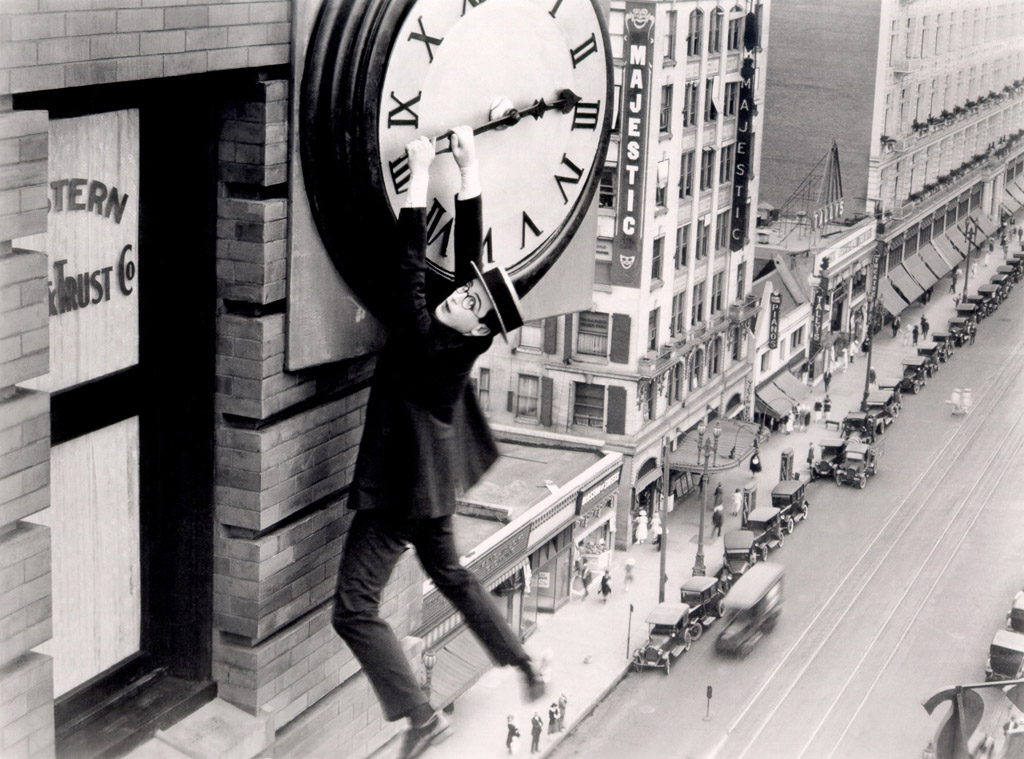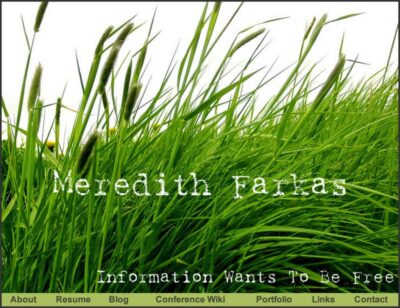“What we think time is, how we think it is shaped, affects how we are able to move through it.”
-Jenny Odell Saving Time, p. 270
This is the first of a series of essays I’ve written on time. Here are the others (they will be linked as they become available on Information Wants to be Free):
- With Work Time at the Center
- The Productivity Trap
- Slow productivity is a team sport: A critique of Cal Newport’s Slow Productivity
- Meredith’s Slow Productivity (not to be mistaken for Cal Newport’s Faux Slow Productivity)
- Queer Time, Crip Time, and Subverting Temporal Norms
- Community Time and Enoughness: The heart of slow librarianship
What I love about reading Jenny Odell’s work is that I often end up with a list of about a dozen other authors I want to look into after I finish her book. She brings such diverse thinkers beautifully into conversation in her work along with her own keen insights and observations. One mention that particularly interested me in Odell’s book Saving Time (2023) was What Can a Body Do (2020) by Sara Hendren. Her book is about how the design of the world around us impacts us, particularly those of us who don’t fit into the narrow band of what is considered “normal,” and how we can build a better world that goes beyond accommodation. Her book begins with the question “Who is the built world built for?” and with a quote from Albert Camus: “But one day the ‘why’ arises, and everything begins in that weariness tinged with amazement” (1).
“Why” is such a simple world, but asking it can completely alter the way we see the world. There’s so much in our world that we simply take for granted or assume is the only way because some ideology (like neoliberalism) has so deeply limited the scope of our imagination. Most of what exists in our world is based on some sort of ideological bias and when we ask “why” we crack the world open and allow in other possibilities. Before I read the book Invisible Women (2021) by Caroline Criado Perez, I already knew that there was a bias towards men in research and data collection as in most things, but I didn’t realize the extent to which the world was designed as if men were the only people who inhabited it and how dangerous and harmful it makes the world for women. What Can a Body Do similarly begins with an exploration of the construction of “normal” and how design based on that imagined normal person can exclude and harm people who aren’t considered normal, particularly those with disabilities. The book is a wonderful companion to Invisible Women in looking at why the world is designed the way it is and how it impacts those who it clearly was not built for. I’ll explore that more in a later essay in this series.
One thing I took for granted for a very long time was time itself. I thought of time in terms of clocks and calendars, not the rhythms of my body nor the seasons (unless you count the start and end of each academic term as a season). I believed that time was scarce, that we were meant to use it to do valuable things, and that anything less was a waste of our precious time. I would beat myself up when, over Spring Break, I didn’t get enough practical home or scholarship projects done or if I didn’t knock everything off my to-do list at the end of a work week. I would feel angry and frustrated with myself when my bodily needs got in the way of getting things done (I’m writing this with ice on both knees due to a totally random flare of tendinitis when I’d planned to do a major house cleaning today so I’m really glad I don’t fall into that shooting myself with the second arrow trap as much as I used to). I looked for ways to use my time more efficiently. I am embarrassed to admit that I owned a copy of David Allen’s Getting Things Done and tried a variety of different time management methods over the years that colleagues and friends recommended (though nothing ever stuck besides a boring, traditional running to-do list). I’d often let work bleed into home time so I could wrap up a project because not finishing it would weigh on my mind. I was always dogged by the idea that I wasn’t getting enough done and that I could be doing things more efficiently. It felt like there was never enough time all the time.
I didn’t start asking questions about time until I was 40 and the first one I asked was a big one “what is the point of our lives?” Thinking about that opened a whole world of other questions about how we conceive of time, what kinds of time we value, to what end are we constantly trying to optimize ourselves, what is considered productive vs. unproductive time, why we often value work time over personal time (if not in word then in deed), why time often requires disembodiment, etc. The questions tumbled out of me like dominoes falling. And with each question, I could see more and more that the possibility exists to have a different, a better, relationship with time. I feel Camus’ “weariness, tinged with amazement.”
This is an introduction to a series of essays about time: how we conceive of it, how it drives our actions, perceptions, and feelings, and how we might approach time differently. I’ll be pulling ideas for alternative views of time from a few different areas, particularly queer theory, disability studies, and the slow movement. I’m not an expert in all these areas, but I’ll be sure to point you to people more knowledgeable than me if you want to explore these ideas in more depth.
How many of you feel overloaded with work? Like you’re not getting enough done? How many of you are experiencing time poverty: where your to-do list is longer than the time you have to do your work? How many of you feel constantly distracted and/or forced to frequently task-switch in order to be seen as a good employee? How many of you feel like you’re expected to do or be expert in more than ever in your role? How many of you feel like it’s your fault when you struggle to keep up? More of us are experiencing burnout than ever before and yet we keep going down this road of time acceleration, constant growth, and continuous availability that is causing us real harm. People on the whole are not working that many more hours than they used to, but we are experiencing time poverty and time compression like never before, and that feeling bleeds into every other area of our lives. If you want to read more about how this is impacting library workers, I’ll have a few article recommendations at the end of this essay.
My exploration is driven largely by this statement from sociologist Judy Wajcman’s (2014) excellent book Pressed for Time: “How we use our time is fundamentally affected by the temporal parameters of work. Yet there is nothing natural or inevitable about the way we work” (166). We have fallen into the trap of believing that the way we work now is the only way we can work. We have fallen into the trap of centering work temporality in our lives. And we help cement this as the only possible reality every time we choose to go along with temporal norms that are causing us harm. In my next essay, I’m going to explore how time became centered around work and how problematic it is that we never have a definition of what it would look like to be doing enough. From there, I’m going to look at alternative views of time that might open up possibilities for changing what time is centered around and seeing our time as more embodied and more interdependent. My ideas are not the be-all end-all and I’m sure there are thinkers and theories I’ve not yet encountered that would open up even more the possibilities for new relationships with time. To that end, I’d love to get your thoughts on these topics, your reading recommendations, and your ideas for possible alternative futures in how we conceive of and use time.
Works on Time in Libraries
Bossaller, Jenny, Christopher Sean Burns, and Amy VanScoy. “Re-conceiving time in reference and information services work: a qualitative secondary analysis.” Journal of Documentation 73, no. 1 (2017): 2-17.
Brons, Adena, Chloe Riley, Ean Henninger, and Crystal Yin. “Precarity Doesn’t Care: Precarious Employment as a Dysfunctional Practice in Libraries.” (2022).
Drabinski, Emily. “A kairos of the critical: Teaching critically in a time of compliance.” Communications in Information Literacy 11, no. 1 (2017): 2.
Kendrick, Kaetrena Davis. “The public librarian low-morale experience: A qualitative study.” Partnership 15, no. 2 (2020): 1-32.
Kendrick, Kaetrena Davis and Ione T. Damasco. “Low morale in ethnic and racial minority academic librarians: An experiential study.” Library Trends 68, no. 2 (2019): 174-212.
Lennertz, Lora L. and Phillip J. Jones. “A question of time: Sociotemporality in academic libraries.” College & Research Libraries 81, no. 4 (2020): 701.
McKenzie, Pamela J., and Elisabeth Davies. “Documenting multiple temporalities.” Journal of Documentation 78, no. 1 (2022): 38-59.
Mitchell, Carmen, Lauren Magnuson, and Holly Hampton. “Please Scream Inside Your Heart: How a Global Pandemic Affected Burnout in an Academic Library.” Journal of Radical Librarianship 9 (2023): 159-179.
Nicholson, Karen P. “Being in Time”: New Public Management, Academic Librarians, and the Temporal Labor of Pink-Collar Public Service Work.” Library Trends 68, no. 2 (2019): 130-152.
Nicholson, Karen. “On the space/time of information literacy, higher education, and the global knowledge economy.” Journal of Critical Library and Information Studies 2, no. 1 (2019).
Nicholson, Karen P. ““Taking back” information literacy: Time and the one-shot in the neoliberal university.” In Critical library pedagogy handbook (vol. 1), ed. Nicole Pagowsky and Kelly McElroy (Chicago: ACRL, 2016), 25-39.
Awesome Works on Time Cited Here
Hendren, Sara. What Can a Body Do?: How We Meet the Built World. Penguin, 2020.
Odell, Jenny. Saving Time: Discovering a Life Beyond Productivity Culture. Random House, 2023.
Wajcman, Judy. Pressed for time: The acceleration of life in digital capitalism. University of Chicago Press, 2020.








I’ve been thinking about time a bit with the eight week digital literacy class I teach. Right now it meets two days a week and to meet minimum clock time I’ve got my students for almost three hours each day. I’m overwhelming students due to the time constraints even when I don’t mean to do so.
Fortunately the deans are thinking about changing things up in the fall so that we ease up the time burden on the students. Shifting from two days to three days a week should help them out a bit. Things are just changing so fast in the digital literacy space that I am rewriting things quite a bit with each new offered section.
I’ll get back to being a librarian some day. For now, I am using my time to equip others for sense-making in a hostile online environment. With all the strangeness in my life lately, I’ve taken that all as a blessing that I have time to help my students face the wild ride of 2024.
It’s amazing how six hours can feel very differently when compressed into two days vs. three. And also, depending on how the time is spent/broken up. I know when I used to teach grad school, I was really focused on covering a lot of content because there was so much happening in the areas that I was teaching in. But, over time, I pared down significantly and left more time for discussion and reflection because I realized I was overwhelming the students with the amount that I was covering. It’s a tough balance to strike for sure, but I’d rather not cover a topic than overwhelm because, in reality, you’re never going to cover everything that’s interesting and relevant to the topic anyway.
Pingback: With Work Time at the Center | Information Wants To Be Free